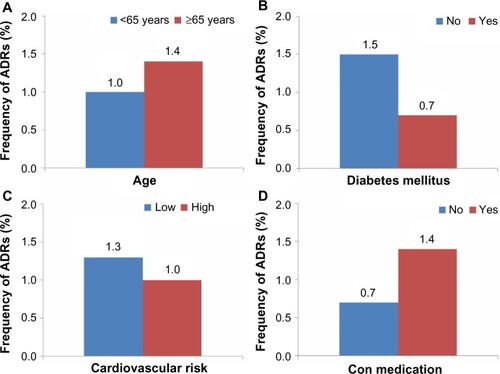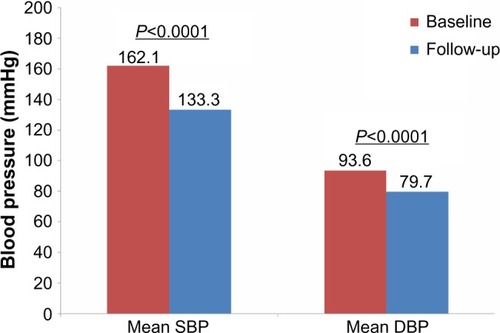Figures & data
Table 1 Patient demographics at baseline (n=5,831, safety set)
Table 2 Types and number of antihypertensive premedications, and the reason for switching to the FDC tablet (n=5,831, safety set)
Table 3 Treatment regimens at baseline and follow-up (n=5,831, safety set)
Figure 1 Frequency of adverse drug reactions (n=5,831, safety set).
Abbreviations: ADRs, adverse drug reactions; Con, concomitant.

Table 4 Frequency of adverse drug reactions (n=5,831, safety set) overall and according to primary organ system, including all individual ADRs reported by more than two patients
Figure 2 Mean change in systolic and diastolic blood pressure from baseline to the 24-week follow-up (n=5,818, full analysis set).
Abbreviations: SBP, systolic blood pressure; DBP, diastolic blood pressure.

Figure 3 Change in the severity of hypertension from baseline to the 24-week follow-up according to the 2007 ESC/ESH classification (n=5,818, full analysis set).
Abbreviations: ESC, European Society of Cardiologists; ESH, European Society of Hypertension; BP, blood pressure.

